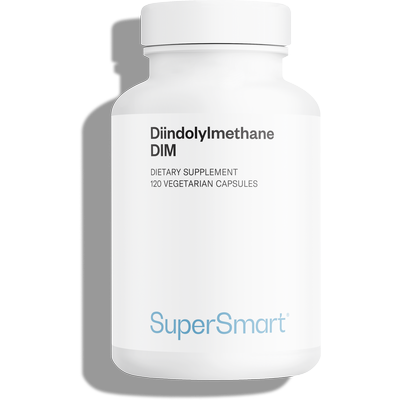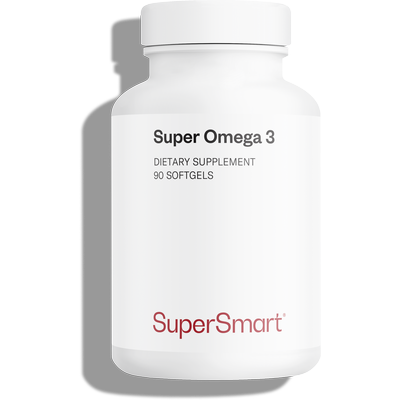Cancer: the ubiquitous substances emerging as key drivers
 A new European research body has been sounding alarm bells: fertility is continuing to fall dramatically. For 50 years, sperm concentration has been dropping at the alarming rate of almost 2% a year, that’s a cumulative decline of nearly 50% (1) within half a century. What’s more, incidence of abnormal sperm is also growing, leading to fertility problems for 25% of couples in the West.
A new European research body has been sounding alarm bells: fertility is continuing to fall dramatically. For 50 years, sperm concentration has been dropping at the alarming rate of almost 2% a year, that’s a cumulative decline of nearly 50% (1) within half a century. What’s more, incidence of abnormal sperm is also growing, leading to fertility problems for 25% of couples in the West.
Researchers believe this could be the result of “insufficient androgen impregnation during fœtal development caused by exposure in pregnancy to endocrine disruptors” or the effects of “epigenetic mechanisms throughout life”, ie, environmental factors that inappropriately activate or deactivate genes (2).
It’s long been known that endocrine disruptors adversely affect reproduction (3-5), but the last few years have seen the publication of numerous studies looking at other, longer-term health effects. The results of these studies have subsequently been summarised by public health authorities who have focused in particular on the development of cancer (6). A large number of endocrine disruptors have been identified as potential or proven carcinogens.
In the body, these substances mimic natural hormones by binding to the same receptors. The signal produced by this binding action leads to a cascade of inappropriate and undesirable molecular and physiological reactions. Over the long term, these reactions completely disrupt the body’s cells and stop them functioning properly: in general, hormones play key roles in a number of essential functions such as foetal development, reproduction, metabolism, regulation of blood sugar … Constant exposure to endocrine disruptors therefore makes the body’s cells act inappropriately and prevents genuine hormones from exerting their activity!
Certain forms of cancer (notably breast, uterine, prostate and testicular cancer) are particularly sensitive to hormones: indeed, they are called hormone-dependent. Hormones stimulate the growth of cancer cells which encourages the development of tumours. Since 1998, there has been an annual increase of 1.5% in rates of testicular cancer, a form of cancer which mainly affects men aged between 20 and 40 and which is therefore not linked to ageing.
How do you know if you’re exposed to endocrine disruptors?
You’re sure to be. A few months ago, a study (7) published by the French association ’60 million consumers’ revealed the systematic contamination of children aged 10-15 living in both urban and rural settings. In each child, researchers found an average of 34 potential or proven endocrine disruptors, several of which had been banned in Europe for years.
These substances, which include pesticides, bisphenols and PCBs, are present in the environment, in water, in toys, food containers and even in clothes: a very recent communique issued on 4 July 2018 by the French Agency for Food, Environmental and Occupational Health & Safety (ANSES) recommends always washing new clothes before wearing them “in order to reduce exposure to endocrine disruptors such as nonylphenols, benzidine, chromium 6 and nickel (8)”.
How can you minimise your exposure to endocrine disruptors and reduce their effects?
It has become virtually impossible to avoid endocrine disruptors completely but you can take several measures to limit your exposure and their effects.
- Wash fruit and vegetables just before consuming and try to eat organically-grown products.
- Vary your fruit and vegetable intake to prevent accumulation of the same pesticide.
- Buy locally-grown products to avoid the preservatives applied to foods transported over long distances.
- Avoid the more contaminated large and older fish, as well as imitation crab and prawns, made from pollock that’s highly-contaminated with mercury.
- Increase your consumption of cruciferous vegetables as they contain DIM (di-indolylmethane) and I3C (indole-3-carbinol), two natural molecules which help prevent tumour formation, reduce the growth of cancer cells and promote their self-destruction, especially in forms of cancer linked to the hormone system (10-14). There are also DIM supplements and formulations that contain these two compounds such as Cruciferous Detox Formula.
- Eat no more than 500 grams of red meat a week (instead prioritise plant-source protein).
- Choose fresh foods.
- Supplement with omega-3 and vitamin E to protect sperm, the membranes of which are very vulnerable to oxidation (15). Vitamin E reduces the effects of lipid peroxidation while omega-3 provides valuable polyunsaturated fatty acids which can replace those that have been modified.
- Avoid cooking in Teflon pans (choose steel or ceramic instead) and throw away any where the coating is damaged.
- Use greaseproof paper rather than foil.
- Avoid nail varnish.
- Use simple products to clean your house (white vinegar, bicarbonate of soda, black soap, essential oils): that ‘clean’ smell that we’ve become so used to is actually a smell of toxic products.
- Use glass or ceramic containers in the microwave.
- Wash new clothes before you wear them.
- Only buy cosmetics that are guaranteed to be free from endocrine disruptors.
References
- M. Rolland, J. Le Moal, V. Wagner, D. Royère, J. De Mouzon; Decline in semen concentration and morphology in a sample of 26 609 men close to general population between 1989 and 2005 in France, Human Reproduction, Volume 28, Issue 2, 1 February 2013, Pages 462–470.
- Rousselle C, Bellanger M, Fiore K, Bayeux T, Chevrier C. Évaluation de l’impact sur la santé reproductive masculine et des coûts associés de deux phtalates : le DEHP et le DINP. Bull Epidémiol Hebd. 2018;(22-23):472-9.http://invs.santepubliquefrance.fr/beh/2018/22-23/2018_22-23_3.html
- Institut national de la santé et de la recherche médicale (Inserm). Reproduction et environnement. Synthèse d’expertise collective. Paris: Inserm, 2011. 713 p. [Internet] http://www.ipubli.inserm.fr/handle/10608/221
- Mitro SD, Johnson T, Zota AR. Cumulative chemical exposures during pregnancy and early development. Curr Environ Health Rep. 2015;2(4):367-78.
- Hanson MA, Gluckman PD. Early developmental conditioning of later health and disease: Physiology or pathophysiology? Physiol Rev. 2014;94(4):1027-76.
- Delva F, Coquet S, Manangama G, Teysseire R, Brochard P, Sentilhes L. Le centre Artemis, plateforme d’évaluation et de prévention de la santé environnementale dédiée à la reproduction, Bordeaux. Bilan de la première année d’activité 2016-2017. Bull Epidémiol Hebd. 2018;(22-23):486-92.http://invs.santepubliquefrance.fr/beh/2018/22-23/2018_22-23_5.html
- 60 millions de consommateurs, Perturbateurs endocriniens : nos enfants contaminés, Mensuel - N° 526 - mai 2017, [https://www.60millions-mag.com/kiosque/perturbateurs-endocriniens-nos-enfants-contamines]
- Avis de l’Anses Rapport d’expertise collective, Évaluation des effets sensibilisants ou irritants cutanés des substances chimiques présentes dans les articles chaussants et textiles d’habillement, Avril 2018 [https://www.anses.fr/fr/system/files/CONSO2014SA0237Ra.pdf].
- GRIVEAU J. F., LE LANNOU D. (1994) : Effects of ant[oxidants on human sperm preparation techniques. International Journal of Andrology, 17, 225-231.
- Cooke D, Steward WP, et al. Anthocyans from fruits and vegetables--does bright colour signal cancer chemopreventive activity?Eur J Cancer 2005 September;41(13):1931-40.
- Kushad MM, Brown AF, et al. Variation of glucosinolates in vegetable crops of Brassica oleracea. J Agric Food Chem 1999 April;47(4):1541-8.
- Zhang Y. Cancer-preventive isothiocyanates: measurement of human exposure and mechanism of action. Mutat Res 2004 November 2;555(1-2):173-90.
- Johnson IT. Glucosinolates: bioavailability and importance to health. Int J Vitam Nutr Res 2002 January;72(1):26-31.
- Conaway CC, Yang YM, Chung FL. Isothiocyanates as cancer chemopreventive agents: their biological activities and metabolism in rodents and humans. Curr Drug Metab 2002 June;3(3):233-55.
- Griveau J. F., Le Lannou D. (1994) : Effects of antioxidants on human sperm preparation techniques. International Journal of Andrology, 17, 225-231.
All rights reserved
Free
Thank you for visiting our site. Before you go
REGISTER WITHClub SuperSmart
of exclusive benefits:
- Free: our weekly science-based newsletter "Nutranews"
- Special offers for club members only



















